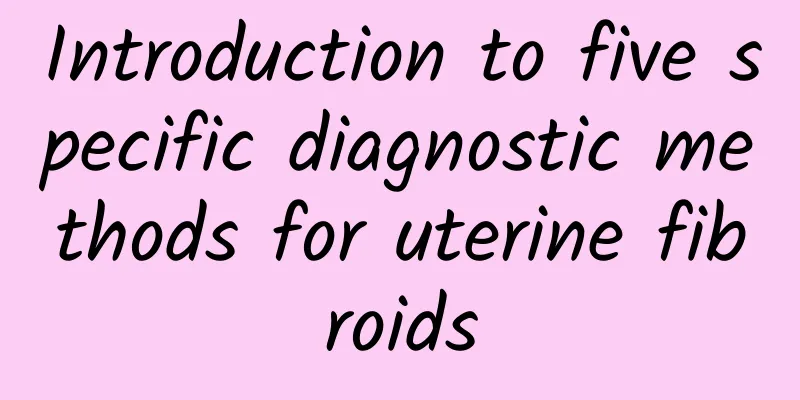Introduction to five specific diagnostic methods for uterine fibroids

|
With the advancement of modern medical technology, some relatively advanced diagnostic methods for uterine fibroids have emerged, which can help patients with uterine fibroids to determine their condition in a timely manner and receive more scientific treatment. What are the specific diagnostic methods for uterine fibroids ? Let's talk about the specific diagnostic methods for uterine fibroids. Generally, the specific diagnostic methods for uterine fibroids are: Plain X-ray: When the fibroids are calcified, the diagnosis of uterine fibroids is manifested by scattered consistent spots, or a shell-like calcified capsule, or a honeycomb with rough and wavy edges. Diagnostic curettage: Small submucosal fibroids or dysfunctional uterine bleeding, endometrial polyps are not easy to detect with bimanual examination, and curettage can be used as one of the methods for diagnosing uterine fibroids. If it is a submucosal fibroid, the curette will feel a convex surface in the uterine cavity, which will rise up and then slide down, or you will feel something sliding in the uterine cavity. Hysterosalpingography: Ideal hysterosalpingography can not only show the number and size of submucosal fibroids, but also locate them. Therefore, it is very helpful for the diagnosis of early uterine fibroids of submucosal fibroids, and the method is simple. Contrast film of the fibroids shows that there is filling and incompleteness in the uterine cavity. CT and MRI: They are both good diagnostic methods for uterine fibroids. When CT is used to diagnose fibroids, its images only express the details within a specific layer, and the image structures do not overlap. The CT image of a benign uterine tumor is an increase in volume. Ultrasound examination: B-ultrasound examination is more common in China. Differentiating fibroids, the diagnosis of uterine fibroids can show the enlargement of the uterus, irregular shape; the number, location, size of the fibroids, whether the fibroids are uniform or liquefied cystic, etc.; and whether there is compression of other organs around them. The above is an introduction to the specific diagnosis methods of uterine fibroids. I believe everyone should know about it. Once diagnosed with uterine fibroids, you must go to the hospital in time to actively receive treatment in order to effectively alleviate the condition, which is beneficial to your health. |
<<: Introduction to several common symptoms of uterine fibroids
>>: Analysis of the most effective treatment methods for uterine fibroids
Recommend
Increased vaginal discharge is a common symptom of mild cervical hypertrophy
For female patients, the symptoms of mild cervica...
What health damage does uterine fibroids cause?
Uterine fibroids are a common disease in women, a...
What causes uterine fibroid pain? What are the symptoms of uterine fibroid pain?
What causes uterine fibroid pain? Uterine fibroid...
What are the hazards of cervical erosion
What are the hazards of cervical erosion? Women s...
3 major causes of adnexitis
Adnexitis refers to inflammation of the fallopian...
What is the difference between polycystic ovary and ovarian cyst? Are they the same?
Although ovarian cysts are not common, they are d...
Treating Amenorrhea with Chinese Medicine and Diet
Dong, female, 36 years old. After "medical a...
How does Western medicine treat mycoplasma pelvic inflammatory disease?
There are many factors that cause mycoplasma pelv...
How much does it cost to treat uterine fibroids? Common symptoms of uterine fibroids
First of all, you should know that there are many...
What are the causes of ectopic pregnancy?
What are the causes of ectopic pregnancy? Ectopic...
What are the food taboos for uterine fibroids
Patients with uterine fibroids need to avoid high...
Symptoms of irregular menstruation mainly include the following
Irregular menstruation is not unfamiliar to many ...
Symptoms of senile vaginitis often have a foul smell
The symptoms of senile vaginitis often include an...
What are the symptoms of adnexitis?
Many women are still not very clear about the sym...
Can I still have a baby after uterine fibroid surgery? Is there a big risk of having a baby after uterine fibroid surgery?
Generally speaking, women with uterine fibroids c...









